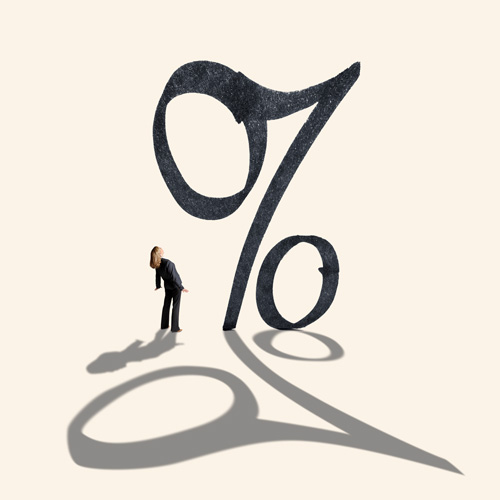Taking a holistic view of their exposure to inflation will give small businesses concerned about the impact of rising prices the best chance of mitigating their impact.
The latest inflation figures make for sobering reading. The consumer prices index rose by 7% in the 12 months to March 2022, up from 6.2% in February - the highest rate in the historic modelled series since March 1992.
Producer price inflation data (which covers the cost of materials and fuels purchased by UK manufacturers) shows an increase of 19.2% for the year to March 2022, up from 15.1% in February and the highest level ever recorded.
According to Paul Hollingsworth, chief European economist at BNP Paribas Markets 360, the bigger-than-expected rise in inflation - coupled with disappointing GDP figures and a mixed bag of labour market data - highlights the risk of a stagflation-like episode for the UK economy.
“Looking ahead, we still think there is further upside to come in UK inflation,” he says. “Most importantly, the 54% rise in the Ofgem energy price cap in April looks set to have pushed consumer price index inflation closer to 9%. Meanwhile, food inflation also looks set to rise further, which is likely to put more upward pressure on inflation expectations in the short run.”
Taking action
So what measures can businesses take to mitigate the impact of inflation? Quantifying the risk and developing a tailor-made solution is crucial, suggests Ole Matthiessen, global head of cash management at Deutsche Bank.
“For this assessment it’s important to understand the type of inflation exposure the business is facing; if there’s enough pricing power to pass on potential price increases; and how earnings are developing compared to costs,” he says.
Businesses need to accept that prices are going up, and that they must adapt their behaviour accordingly. Once this has been done, there are many things a business can do to try to mitigate the effect of inflation – or at the very least help it outperform the competition.
That is the view of Simon Geale, executive vice president of procurement and supply chain consultancy Proxima, who groups these actions into three categories.
“Firstly, it’s about collaborating internally to identify where impact can be mitigated through simplification, substitution, cost engineering, and price uplifts,” he says. “Secondly, it’s vital to work differently with suppliers and collaborate where appropriate to create partnerships, foster innovation and ultimately secure supply, which could also come from opening new sources of supplier.”
Finally, businesses need to cut out waste. “Most businesses overspend - either in price or volume - so get a grip on what is going out the door and weigh up the price paid versus value achieved,” says Geale. “In all cases, navigating inflation requires an insight-led approach. You have to know and understand the problem that you’re facing in order to outperform the market.”
Challenger thinking
Inflation has not been such a major concern for businesses for some time, which means many financial professionals have little or no experience of working in an environment where prices are rising rapidly.
“As a result, many won’t have clear guidelines on how to manage inflation or interest rate risks,” says Matthiessen. “However, this lack of experience does not necessarily have to be a concern, depending on how fast finance teams can expand their knowledge and set out a clear strategy to prepare the business for any potential exposures.”
Geale agrees that in some areas of finance it would be hard to find anyone with practical experience of such high inflation, given that it is 30 years since prices rose at a similar rate. But he agrees that this is not necessarily a problem for small businesses.
“What would be a concern is if financial professionals were not changing their behaviours in reaction to inflation and asking the business to look at the problem through a different lens,” he concludes. “Doing the same thing is not an option. We need to see adaptability and ‘challenger thinking’.”
Action points
- Understand what inflation is - The headline rate of inflation is a composite figure of different rates of price movements in a number of product and service categories, the impact of which on a specific business may be modest or very significant
- Understand the impact on the supply chain - Where supply chains are affected by increases in the price of raw materials, energy and transportation, the impact will be substantially higher than that indicated by the headline inflation rate
- Consider the real price drivers for the business and the outlook for those pressures - It is important to consider what may be causing these increases (for example, if price inflation is a supply issue it could reverse when supply chain pressures ease).
